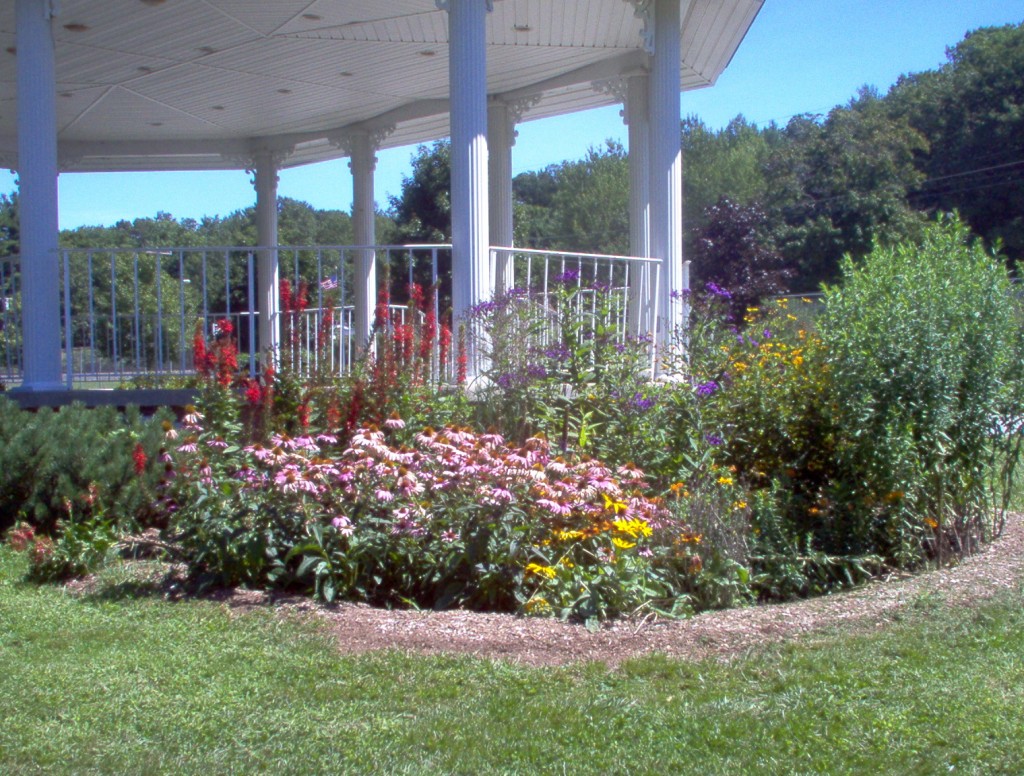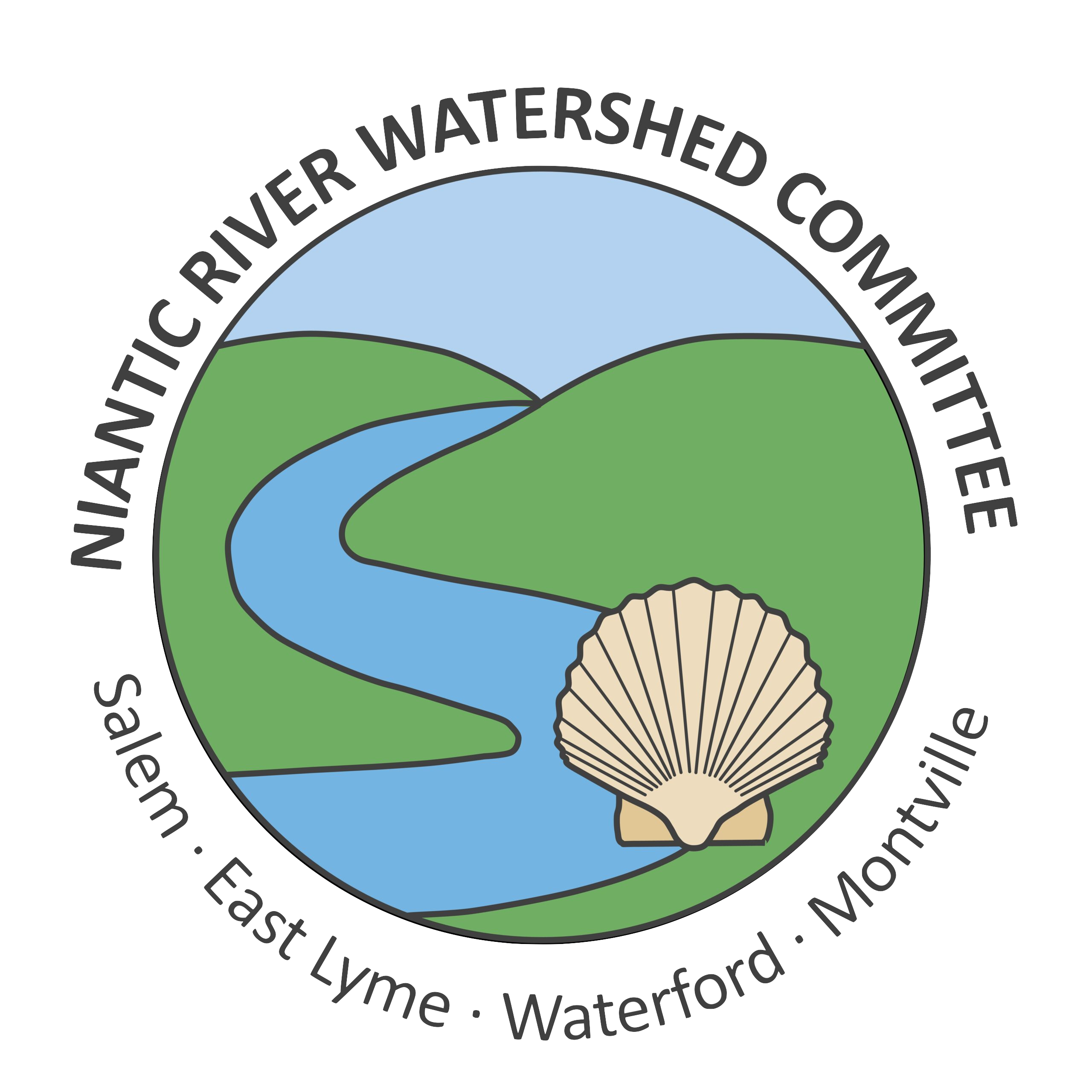The Niantic River Watershed Committee wants to help you plant a rain garden!
If you are a resident of East Lyme, Montville, Salem, or Waterford and live within the Niantic River watershed, we will pay you to plant a rain garden. The planting of a rain garden is a beautiful and practical way to help improve water quality and protect the environment right at your own home, every time it rains!!
Homeowners can earn up to $250 towards the cost of installing a rain garden. Reimbursable items include rain garden plants and soil amendments. Design, construction, labor costs, and items such as tools, hoses and sprinklers are not reimbursable.
Funds are limited and are available on a first come/first served basis, so contact us today!

Do you live in the Niantic River Watershed?
This program is only available for folks who live in the Niantic watershed. To determine if you live in the watershed, click on the maps below to see if your address falls within the watershed limits. If you are still not sure, contact us at 860-774-9600 or by email at judy.rondeau@comcast.net, and we’ll try to help you out.
East Lyme:
Waterford:
Montville:
Salem:
WHY SHOULD YOU PLANT A RAIN GARDEN?
When you plant a rain garden, you help make the Niantic River and Long Island Sound cleaner.
Each time it rains, rainwater flows over and through the ground, picking up contaminants that are left by our everyday activities – like lawn fertilizers and pesticides; oil, gas and heavy metals from our vehicles; viruses and bacteria in animal droppings; even sediment. Without intervention, these contaminants find their way into the Niantic River via nearby ponds and streams, including Latimer Brook in Montville and East Lyme, and Stony Brook and Oil Mill Brook in Waterford, where they can harm wildlife, including shellfish, and make the water unsafe for swimming.
The Niantic River is a beautiful resource for area residents and visitors but it is not as healthy as it could be. Nitrogen and fecal bacteria, two common pollutants found in stormwater runoff, harm water quality in the Niantic River.
Nitrogen is a nutrient that is necessary for plant growth. Nitrogen is a key component of the fertilizers we place on our lawns and gardens. However, nitrogen dissolves very easily in water, and as a result, is carried into the Niantic River by stormwater runoff. Once there, it feeds algae and seaweed just as readily as it feeds lawns and gardens. Algae blooms in the Niantic River can harm or kill marine life, including our once-plentiful bay scallops.
Fecal bacteria are found in human and animal waste. Fecal bacteria from animal waste left on the ground surface can wash into the Niantic River after heavy rainfalls. Fecal bacteria can also come from septic systems that are not functioning properly. Fecal bacteria transported into the river via stormwater runoff is ingested by shellfish, making them unsafe to eat, and can also make the water unsafe for swimming immediately after it rains.
By planting a rain garden, you catch rainwater from areas in your yard where it can’t soak in, like roofs, decks and driveways, and send it to your rain garden, where it can soak in. By soaking rainwater into the soil, you protect the Niantic River and Long Island Sound by keeping polluted rainwater out of our ponds and streams – every time it rains!
How to apply for the Rain Garden Reward Program:
- Fill out the Rain Garden Reward Program application.
- Submit your application to the Niantic River Watershed Committee:
Niantic River Watershed Committee, Inc.
c/o Judy Rondeau, Coordinator
Eastern Connecticut Conservation District
238 West Town Street
Norwich, CT 06360
or by email to: judy.rondeau@comcast.net
-
- Upon acceptance, construct your rain garden. Save all your receipts!
- Upon completion of your rain garden, submit your project and reimbursement voucher to NRWC for final approval.
- Receive your reward check for up to $250
For more information or to schedule a visit, contact Watershed Coordinator Judy Rondeau at judy.rondeau@comcast.net or 860-774-9600, ext. 13.
Rain Garden Resources
Never planted a rain garden? Not sure what a rain garden is?
Don’t worry, we are available to help! Prior to approving your application, we will review your plans and visit your site to make sure your rain garden is properly designed and located. Once your garden is planted, we will visit again to make sure it is properly installed.
For assistance on how to design a rain garden, visit the Rain Garden page at CT NEMO – http://nemo.uconn.edu/raingardens/. This page has excellent guidance on how to site, design and install a rain garden and has instructional videos and even a rain garden app to help you along. Download the UConn Rain Garden Manual here.
Another good source for how to build a rain garden is Rain Gardens – A how-to manual for homeowners by the Wisconsin Department of Natural Resources.
Rain Garden Plants
A rain garden is not a water garden and does not use water plants. A rain garden should not have standing water in it for more than 24 hours after a rain storm. Rain garden plants are annuals and perennials that should be able to tolerate being wet for that 24 hour period, but no longer.
We recommend using native perennial plants for your rain garden. Native plants have many advantages over non-native plants. Perennial plants come back year after year, so you don’t need to replant your garden each year. Native plants are typically drought tolerant once established and will survive our cold New England winters. Native plants provide food, shelter and nesting materials for our native animals, especially birds and pollinator insects like butterflies and bees.
Suggested Rain garden plants:
You can find information on suitable rain garden plants at the following sites. Please check the plant hardiness as not all plants included on some lists may be hardy in our zone. You can access the USDA Interactive Plant Hardiness Zone map here.
